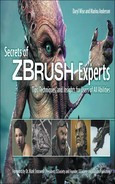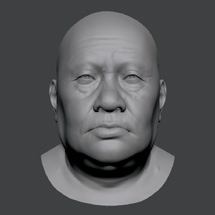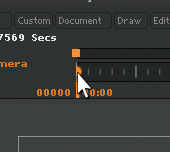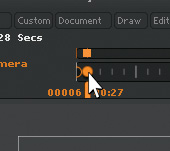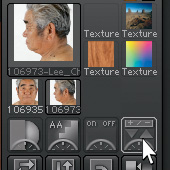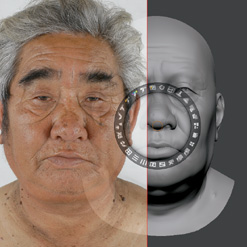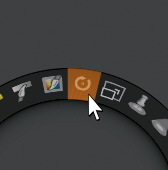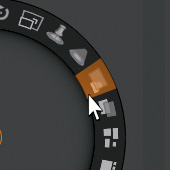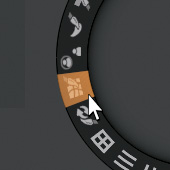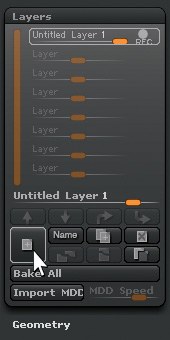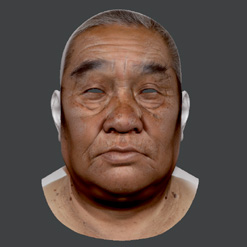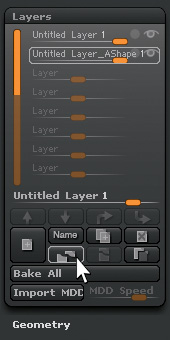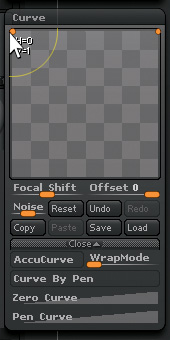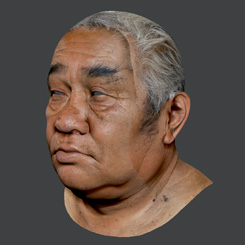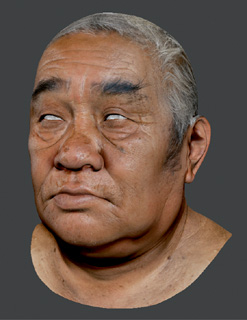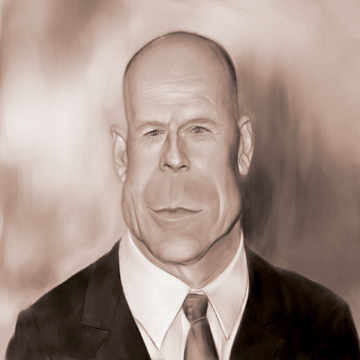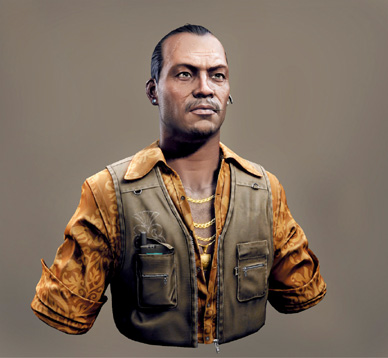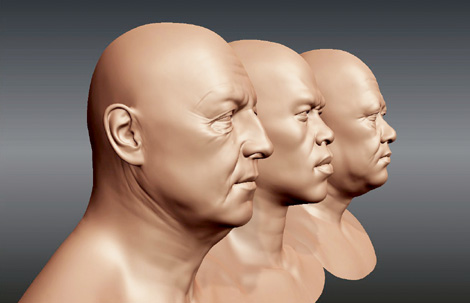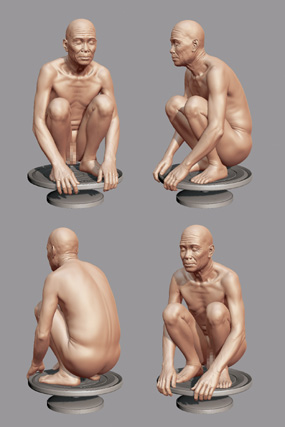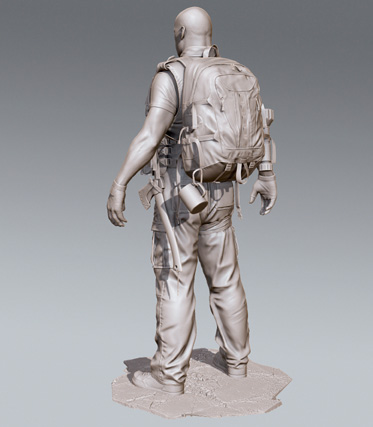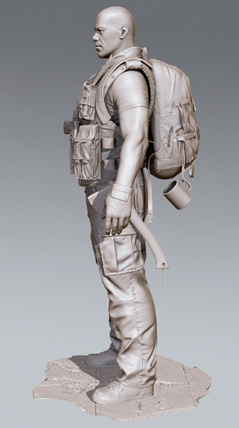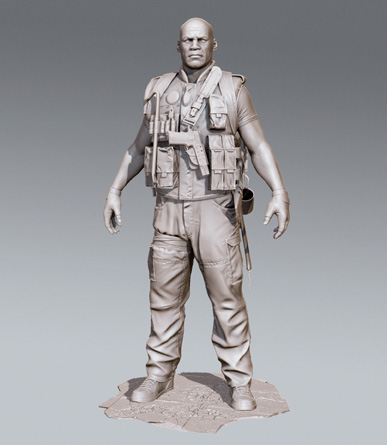
“Survivor.”
I have been a character artist working at Crytek in Frankfurt, Germany, for more than two years. Before that, I worked and lived in Hamburg, Germany, where I was born. I have fun modeling humans realistically and testing new 3D tools and workflows. In my spare time, I work on improving my 3D skills, spend time with my girlfriend, and participate in sports.
In ZBrush 4, Pixologic introduced a new Texturing tool called SpotLight.
In this technique, I show a way to texture a head using photo references with the help of some of its features.
I load my mesh. It doesn’t have to have UV mapping because I will use Polypaint, which stores the color information directly in the polygons of the mesh. To work best, I make sure that I have enough polygons for getting all the information from the texture into the Polypainted head. In my case, the head has around 2 million polygons (see Figure 3.1).
In the top menu, I go to Movie, TimeLine, Show to activate the TimeLine in the interface. I rotate my mesh to the front view and set a key by clicking in the TimeLine (see Figure 3.2).
I repeat step 2 by rotating the mesh to the side view and clicking in the TimeLine again (see Figure 3.3).
Now I can toggle between the different views by using the left and right arrow keys on the keyboard. In this case, I only project the textures from a front and a side view.
To be able to paint on the mesh, I activate Colorize under Tool, Polypaint. I select the Standard Brush and make sure that RGB is turned on while Zadd and Zsub are turned off (see Figure 3.4).
I import the photos I want to use for texturing by going to Texture, Import and selecting all the textures I need. After importing, I select the photo from the front and click the right button with the + and − symbol on it (see Figure 3.5).
The image is now active in SpotLight, and a dial contains different tools to manipulate the image in various ways (see Figure 3.6).
I switch to my stored front view using the arrow keys and try to match the image as close to the mesh as possible by scaling and rotating it. The Scale Image button is shown in Figure 3.7, and the Rotate Image button is shown in Figure 3.8.
I click on the icon and drag left and right. To better see if the texture matches the mesh, I change the Opacity of the photo by clicking and dragging the corresponding button (see Figure 3.9).
Another way to make the texture match the mesh is by using the Nudge Brush. By using this brush, I directly deform the texture (see Figure 3.10).
I prefer to match texture and model by deforming the mesh to the texture. For the deformations as well as the Polypaint, I create a new layer under Tool, Layers (see Figure 3.11).
I use the Move Brush to match the model to the texture. As soon as I’ve matched everything, I use the Opacity button to dial down the intensity of the image and press the Z button to hide the SpotLight dial. Now I can paint the texture on the model using the Standard Brush. To check the result, I press Shift+Z to temporarily deactivate SpotLight (see Figure 3.12).
I save the actual SpotLight by going to File, Save SpotLight. This is useful for projecting the texture again at a later point because all texture changes and positions are saved within this file.
Because I want to get rid of the mesh deformations I did with the Move Brush, I go to the Layers menu, deactivate Record mode by clicking the REC button, and click the Split Layer button (see Figure 3.13).
I disable the second layer ending with Shape by clicking the Eye button right next to it. The mesh looks correct again, and the texture still fits.
For the side view projection, I repeat steps 5 to 10 with the photo from the side and by using the corresponding stored side view. I also make sure that X Symmetry is switched on to texture both sides of the head simultaneously. I don’t care if I paint over the texture I painted from the front because I will erase parts from the side view projection later. Now I have four layers in the Layers menu, of which the two “shape” layers are disabled.
I go to the Brush menu, Curve and modify the curve for the Standard Brush as shown. This is important for getting a clean line when erasing color from the side view projection (see Figure 3.14).
I start erasing color from the side projection by activating Record mode for the layer and holding down the Alt button while painting away areas in the front of the face (see Figure 3.15).
To get rid of the seam, I create another layer, switch back to the stored side view, and activate SpotLight. By lowering the RGB intensity of the Standard Brush to around 15, I paint away those seams and then save my image by clicking on File, Save As (see Figure 3.16).
